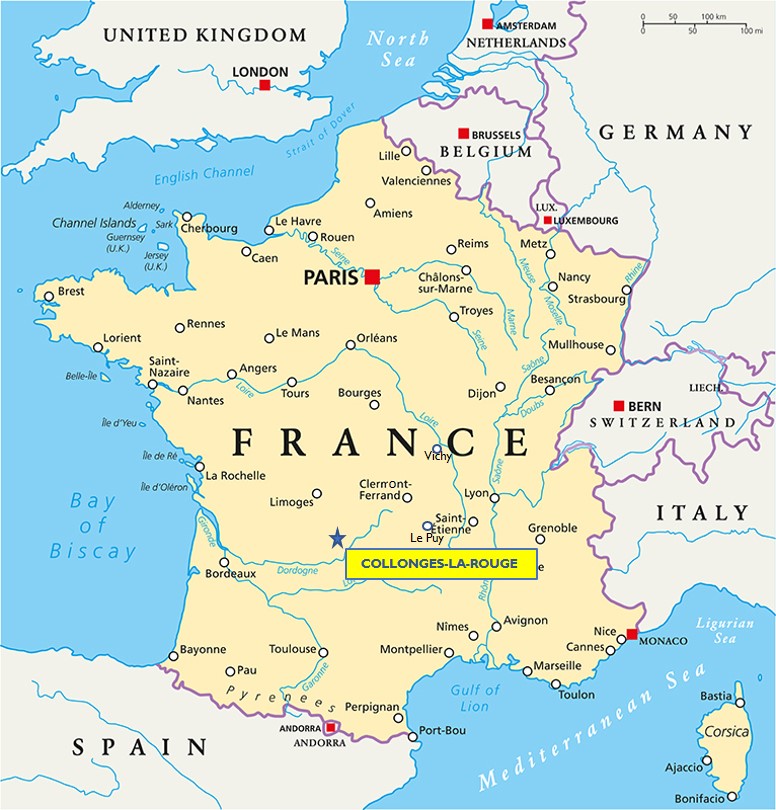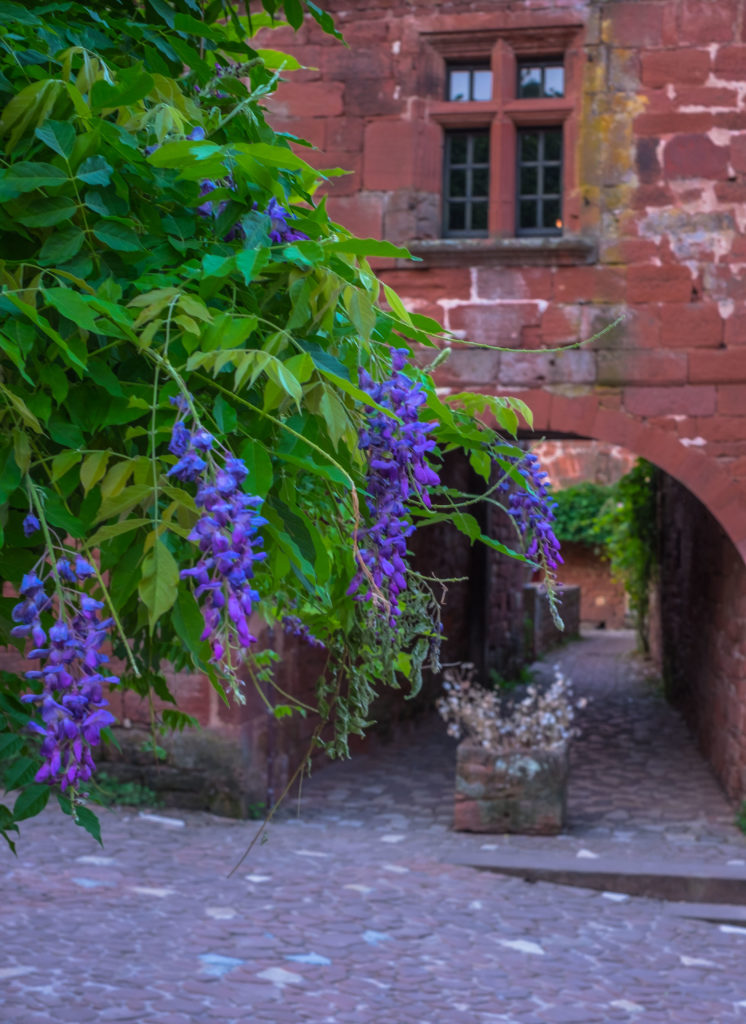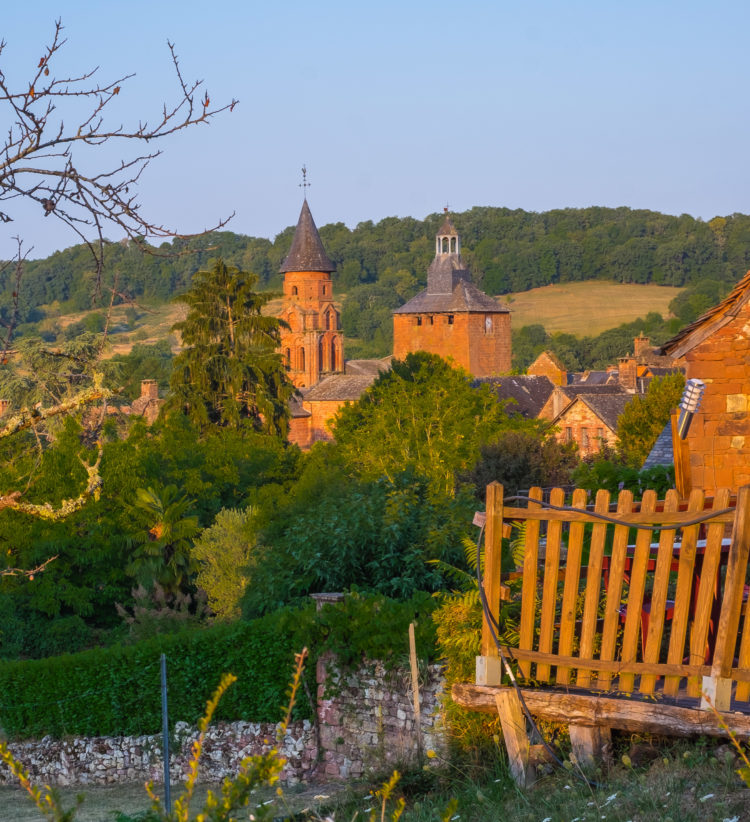The first among its peers
Here’s an example of truth in advertising at its best: the little village of Collonges-la-Rouge in the départements of Corrèze is called “la Rouge” because… well, because it’s red. And it is officially one of France’s “most beautiful villages” because…it’s really beautiful.
In fact, Collonges-la-Rouge has a legitimate claim to be called the original “most beautiful village in France”, since it was the town’s mayor, Charles Ceyrac, who conceived the idea of creating an association of exceptional sites in 1982. He eventually convinced 66 of his fellow mayors all across the country to sign on to the project, and the list of plus beaux villages now counts 157 towns in 70 of France’s 101 départements.

RELATED: How does a town get to be classified as an official “most beautiful village of France”?
Collonges was the first village to be added to the list, and it certainly demonstrates the spirit expressed by the Association’s website: “We aim to avoid certain pitfalls such as villages turning into soulless museums or, on the contrary, ‘theme parks’", they write. “Our well-reasoned and passionate ambition is to reconcile villages with the future and to restore life around the fountain or in the square shaded by hundred-year-old lime and plane trees.”

Medieval roots
Collonges-la-Rouge first shows up in recorded history in the 700s C.E., although evidence suggests people lived here much earlier than that. Pilgrims on their way from Rocamadour to the great cathedral at Saint John of Compostella in Spain stopped at the abbey here; in that sense, this has been a major tourist destination for centuries.

But the real character of the town was established through its connection to the incredibly powerful Viscounts of Turenne. This part of France was essentially independent of the French kingdom, a “state within a state”, for 800 years, and Collonges-la-Rouge was made an important judicial center for the region. A population rich in notaries, attorneys, and judges made the village prosperous in the 15th and 16th centuries, and many of the town’s beautiful houses and public buildings were constructed during that period.
One of the first I saw when I came into town is the Castel de Vassinhac, built in 1583 by Gédéon de Vassinhac. He was “lord of Collonges” and the “Captain Governor of the Viscount of Turenne”, so it’s not surprising that his house should be so imposing. (And it’s been well-maintained – it’s still inhabited today.)

I also particularly liked the Maison de Sirène (the Siren’s House), with its arched gateway. It was once featured on a French postage stamp, and today houses a nice museum with a collection of local fossils, old furniture, and items associated with the pilgrimage to Saint James of Compostella.

A church with a peculiar distinction
One building in Collonges is much older, though: construction started on the Eglise Saint Pierre in the 11th century. Like most other churches in this part of France, it evolved and grew over the centuries into the fine red structure that dominates the town’s skyline today.
But this church has something unlike any other I’ve seen anywhere in the world: two naves, one fairly plain and unornamented, the other decorated in the Gothic flourishes you’d expect to see in any Catholic church in Europe. During the Wars of Religion that tore France apart in the late 1500s, the people of Collonges-la-Rouge took a most unusual position: they decided to accommodate both sides of the conflict. They turned one side – the plain, undecorated side -- of Eglise Saint Pierre over to the Protestant congregation, and the other nave was consecrated to Catholic celebrations of mass!

Given the tensions of the day – and the outright bloody warfare that accompanied them – this must have been an extraordinary expression of community and ecumenical spirit. It’s hard to imagine today the arguments that must have preceded the decision to share the church in this way, and hard to imagine the conversations that must have followed the dual celebrations on any given Sunday morning.
The “City of 25 Towers”
Of course, the thing that strikes you immediately about these buildings, even from a few miles away, is their rich red color. Almost all of them are constructed from red sandstone taken from local quarries; this material, which gets its color from high levels of iron oxide, is evident in other nearby towns like Meyssac. It finds its highest expression, though, in the Renaissance mansions of Collonges-la-Rouge; their decorative turrets give the town its nickname, the “City of 25 Towers.”


For as long as the town enjoyed all the special privileges it was granted by the Viscounts of Turenne, this was one of the most prosperous places in central France. That all ended abruptly on June 8, 1738, when the last Viscount in that long line got into trouble over his enormous gambling debts and was forced to sell his holdings to King Louis XV.
Collonges-la-Rouge lost all its administrative privileges and the influence that came with them. The town fell into a two-century slide into obscurity. (It did enjoy a good reputation as a wine-producing center for a while, but the little phylloxera aphids that swept across France in 1860s injected their venom into the vines here, too, and the industry was wiped out.) As in so many other French villages after the Revolution, people abandoned their rural lives and moved to the cities looking for work and the other advantages a small town could not offer. Collonges lost 40% of its population in the latter decades of the 19th century.
Collonges-la-Rouge : A village built for tourism
That was the concern at the heart of Charles Ceyrac’s mission when he founded the Association of “Most Beautiful Villages” here in 1982. As the Association’s website says, he devoted his work to “uniting energies and passions to protect and promote the outstanding heritage of these exceptional villages and thereby provide them with an alternative to rural exodus.”

It’s arguable to what degree the “rural exodus” has been stopped. The population of Collonges-la-Rouge was 1,183 in 1792; by 1962 it had dropped to 401 and rose only to 480 in 2008. What does remain here, though, is a remarkable getaway destination for tourists. Many of the old mansions are now auberges, bed-and-breakfasts, or restaurants, like the Relais de St Jacques de Compostelle. It’s right in the middle of town, offering plainly decorated non-smoking rooms for around 80 Euros a night.
And the town has done a great job of attracting the kind of shops – handmade products, local foods and liqueurs, and art works – that appeal most to tourists. France Today cites a statement from the Mayor’s office saying ““We don’t want shopkeepers to sell products from Taiwan. Artisans thrive here.”

The result? Collonges-la-Rouge claims to have 6,000 to 7,000 tourists in town during the peak days of summer vacations, and over 700,000 visitors every year. In that sense, it’s a village (like Apremont-sur-Allier, Castelnaud-la-Chapelle, Charroux, and many of my other favorite “plus beaux villages”) that has only one real vocation: preserving the ambiance and charm of a long-lost era for the enjoyment of tourists, without making it seem “too pretty” or too much like a theme park for adults.

It quickly became one of my favorite “most beautiful villages” among the many I’ve covered on this blog. If you’re in the area, I recommend Collonges-la-Rouge to your attention as a great day trip, or even as a base for traveling around the other great sites of the Corrèze!
Do you have a favorite among the “most beautiful villages of France”? Or a place you think should be added to the list? Please share your experience in the comments section below – and take a second to share this post with someone else who loves traveling in France. Thanks for reading!






Il doit etre tellement embetant – rendre visite a tous ces villages. Comment est-ce-que vous pouvez survivre tous ces difficultes?!!!? Si cette vie affreuse vous afflige trop, je serais ravais d’echanger notre boulots.
Oui, c’est dur – mais j’accepte la challenge volontairement !😁